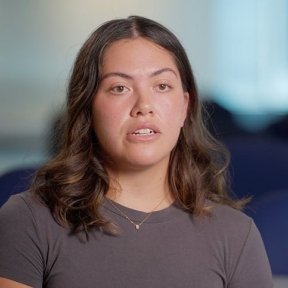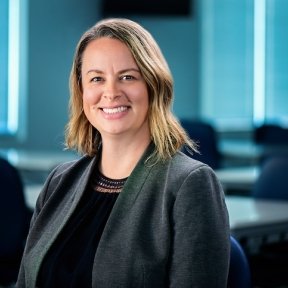The Midwestern University Physical Therapy Program aims to educate students to become highly skilled physical therapists who make meaningful contributions to healthcare through academic excellence and community service. The Glendale Campus offers two exciting possibilities for students – a Residential Pathway and a Hybrid Pathway.
Residential Pathway
The residential pathway comprises 10 consecutive quarters across 30 months. The initial 7 quarters feature theoretical teaching at the Glendale Campus, followed by 3 quarters (33 weeks) of immersive clinical education.
Embracing a spiral model, the curriculum revisits core content in-depth as students progress, encouraging critical integration across practice domains. This structure ensures practical alignment between theoretical concepts and clinical experiences, fostering a robust grasp of biological, physical, clinical, and behavioral sciences.
Highlights include:
- A spiraled curriculum that revisits content at higher levels as students progress, fostering deeper understanding.
- Integrated didactic quarters facilitate cross-practice content integration and sequential learning experiences.
- Robust foundation in sciences where students learn to apply research and evidence critically in practice.
Both Pathways
- Prepare students to excel as versatile healthcare team members and contribute to functional improvement and care coordination. Our PT graduates are prepared to make lasting contributions through leadership, health promotion, and interdisciplinary cooperation in education, practice, and research.
- Foster collaboration where students work with faculty to nurture vital clinical and lifelong learning skills, creating a collaborative environment for individuals from diverse healthcare backgrounds.
- Offer enriching clinical experiences. Clinical Education Placements are offered in a wide range of practice settings and environments, ensuring a diverse and comprehensive learning experience for our students. These placements encompass urban, suburban, and rural areas both within and beyond the borders of Arizona, providing students with exposure to different healthcare contexts. It is essential for students to be ready and willing to travel to various locations where clinical placements are made available.
- Equip students to excel as versatile healthcare team members and contribute to functional improvement and care coordination.
Learn More
Learn more about program requirements and find quick links to relevant catalog content. You’ll also find information on WICHE PSEP tuition assistance and scholarships to guide you in your application process.
- Bachelor's degree
- Minimum cumulative GPA: 2.9 science, 3.0 overall on a 4.0 scale
- Successful completion of prerequisite courses
- Completion of 30 hours of observation
*Subject to change
The College of Health Sciences Physical Therapy Program uses a holistic admissions process for students who possess the academic and professional promise necessary for development as competent, caring members of the healthcare community.
The Doctor of Physical Therapy Program is open on a competitive admissions basis to applicants having bachelor's degrees in any field but who have not completed an accredited physical therapy program. To select these candidates, a competitive admissions framework has been established. Within this competitive admissions framework, multiple criteria are used to select the most qualified candidates from an applicant pool that exceeds the number of seats available.
The Physical Therapy Program uses the Centralized Application Service for Physical Therapy Schools (PTCAS). The Physical Therapy Program Admissions Committee reviews completed applications throughout the admissions cycle to determine the applicant's eligibility for an interview. Interviews are typically conducted during the fall and winter. Admission decisions are made on a rolling basis.
Application Deadline
Applicants for both residential and hybrid pathways are required to submit their applications to PTCAS at https://ptcas.liaisoncas.com/applicant-ux/#/login by March 15th. The Midwestern Physical Therapy Program has one PTCAS application for all applicants, with options for applicants to select the pathway to which they would like to apply (residential, hybrid, or both). The PTCAS application submission site opens on June 15th.
Please refer to the PTCAS application instructions for specific details about completing the application, required documents, and processing time. Applicants seeking admission into the hybrid pathway must complete the supplemental hybrid questions on the PTCAS application.
*Subject to change
- Applicants for all PT program pathways are required to submit their applications to PTCAS at https://ptcas.liaisoncas.com/applicant-ux/#/login by February 15th. The Midwestern Physical Therapy Program has one PTCAS application for all applicants, with options for applicants to select the pathway to which they would like to apply (residential, hybrid, or both).
- The PTCAS application submission site opens on June 15th. Please refer to the PTCAS application instructions for specific details about completing the application, required documents, and processing time. Applicants seeking admission into the hybrid pathway must complete the supplemental hybrid questions on the PTCAS application.
- Applicants are strongly encouraged to apply early as completed applications are reviewed on a rolling basis from August through February.
Application process and deadlines*
*Subject to change
Mission
The Midwestern University Physical Therapy Program will use the highest educational and professional standards to prepare physical therapists who can provide quality physical therapy services to a diverse population across all levels of the healthcare continuum.
Expected outcomes for the program emphasize strengthening program-community relationships by providing continuing professional development opportunities for practicing physical therapists, encouraging expertise in clinical practice, and enhancing the awareness and knowledge of the physical therapy profession among diverse communities.
Goals
Student/Graduate Goals:
- Graduates and students will be prepared to provide culturally competent, whole-person physical therapy services to a diverse population across all levels of the healthcare continuum.
- Graduates will demonstrate a commitment to professional development in the areas of clinical practice, service, and advocacy.
- Graduates will have the ability to contribute to the educational growth of future practitioners and to the body of knowledge in the profession.
- Students and graduates will participate in interprofessional education and/or interprofessional collaborative practice.
Faculty Goals:
- Faculty will provide high-quality teaching and professional standards.
- Faculty will participate in scholarship activities which may include the scholarship of discovery, integration, application, or teaching.
- Faculty will be engaged in service to the Department, College, University, community, or profession.
- The collective core faculty will demonstrate expertise in contemporary, evidence-based clinical practice in a variety of settings across the continuum of care.
Program Goals:
- The program will contribute to meeting the needs of the physical therapy workforce that supports a diverse population across all levels of the health care continuum.
- The program will create post-professional educational opportunities for faculty, graduates, clinical instructors and the greater physical therapy community to facilitate continuous professional development in areas such as teaching, research, leadership, practice, service, and advocacy.
- The program will collaborate with other health professional programs, community partners and clinical sites to support the development of interprofessional collaborative practice across the curriculum.
- The program will cultivate a culture of diversity and inclusivity that benefits students, faculty, staff, patients, caregivers, and communities that we serve.
- The program will provide an innovative curriculum that integrates the highest educational standards and contemporary practice.
Reported by the Federation of State Boards in Physical Therapy for MWU graduates:
Ultimate pass rate - 97.9% (averaged over the past 2 years for the Class of 2024 and 2025)
- Ultimate pass rate - 95.9% (Class of 2024)
- Ultimate pass rate – 100% (Class of 2025)
- 2-year average for Class of 2024 and 2025 - 99%
- The Class of 2024 had a 98% graduation rate (49/50)
- The Class of 2025 had a 100% graduation rate (54/54)
100% (Classes of 2024 and 2025)
Midwestern University’s Physical Therapy-Residential, Glendale Campus is part of the Western Interstate Commission for Higher Education (WICHE) Professional Student Exchange Program (PSEP). PSEP allows students outside of Arizona who live in WICHE’s participating states and are pursuing careers in 10 health fields – ranging from optometry to dentistry to veterinary medicine – to apply for participating healthcare programs across state lines and receive substantial tuition support from their home state or territory. Visit the WICHE website for complete details about PSEP and how to apply for reduced tuition.
Visit our Scholarships page to explore other opportunities.
As a physical therapist, you are trained to diagnose and treat individuals of all ages who have medical problems or other health-related conditions that limit their abilities to move and perform functional activities in their daily lives. You examine each individual and develop a treatment plan that helps restore function, improve mobility, relieve pain, and prevent or limit permanent disabilities for patients suffering from injuries or disease. You'll also help restore, maintain, and promote overall fitness and health through wellness-oriented programs that develop more active lifestyles.
Your education in physical therapy starts with basic science courses such as biology, chemistry, and physics, and then introduces specialized courses, including biomechanics, neuroanatomy, human growth and development, manifestations of disease, examination techniques, and therapeutic procedures. In addition to classroom and laboratory instruction, you'll receive supervised clinical experience where you examine patients' medical histories and then test and measure strength, range of motion, balance and coordination, posture, muscle performance, respiration, and motor function. Your treatment plan identifies appropriate exercises that encourage patients to use their muscles and increase capacity and endurance in these areas.
Pre-professional education should include courses in anatomy, biology, chemistry, social science, mathematics, and physics. Experience as a volunteer in the physical therapy department of a hospital, clinic, or with a high school athletic trainer will benefit your application to physical therapy educational programs. Strong interpersonal skills will help you educate your patients about physical therapy treatments, better communicate with patients' families, and provide compassionate treatment.
All states require physical therapists to pass national and state examinations and be licensed in the state of practice. An important member of the health care team, you'll provide your knowledge of physical therapy in consultation with other professionals such as physicians, dentists, nurses, educators, social workers, occupational therapists, speech-language pathologists, and audiologists. Some PTs treat a wide range of ailments; others specialize in areas such as pediatrics, geriatrics, sports medicine, neurology, or cardiopulmonary physical therapy.
Nearly 60 percent of physical therapists work in hospitals, clinics, or private practice. You may also be employed in home healthcare, nursing care facilities, outpatient care centers, physician offices, rehabilitation centers, adult day care programs, or schools. Physical therapists also teach in academic institutions and conduct research. The U.S. Bureau of Labor Statistics projects that employment in the field will grow 28 percent through 2026, much faster than average for all occupations. Demand will be spurred by increasing numbers of individuals with disabilities or limited function, chronic or debilitating conditions associated with aging, and children saved by technology but with severe birth defects, or people who must cope with the aftermath of trauma.
According to the American Physical Therapy Association (APTA):
With just a 0.2 percent unemployment rate, physical therapists are now experiencing the best employment conditions since the enactment of the Balanced Budget Act of 1997.
Physical therapists formed their first professional association in 1921, the American Women's Physical Therapeutic Association, led by Mary McMillan. By the end of the 1930s, both genders were admitted and membership grew to nearly 1,000 practitioners. During the 1940s and 1950s, demand increased significantly for physical therapists to collaborate in treating the nationwide polio epidemic.
If you want to be the type of healthcare provider who sees a whole person rather than a symptom or illness; someone who gets to know your patients as people and wants to be involved in your community; someone who is compassionate, has a healing touch, and communicates well; and someone who enjoys knowing a diverse range of people from different backgrounds, a career in physical therapy may be just right for you.
Sources: American Physical Therapy Association; US Bureau of Labor Occupational Outlook Quarterly; ExploreHealthCareers.org
The Physical Therapy Program at Midwestern University, Glendale, AZ is accredited by the Commission on Accreditation in Physical Therapy Education (CAPTE), 3030 Potomac Ave, Suite 100, Alexandria, VA 22305-3085; telephone: 703/706-3245; e-mail: accreditation@apta.org. If needing to contact the program/institution directly, please call 623-572-3920 or email azpt@midwestern.edu.
In April 2023, CAPTE approved Midwestern University’s Application for Approval of Substantive Change to offer a hybrid pathway to the Doctor of Physical Therapy Degree.
Midwestern University is accredited by The Higher Learning Commission, 230 South LaSalle Street, Suite 7-500, Chicago, Il 60604-1413; 800/621-7440.Midwestern University is accredited by The Higher Learning Commission/A Commission of the North Central Association of Colleges and Schools (HLC/NCA), 230 South LaSalle Street, Suite 7-500, Chicago, IL 60604-1413.
Academic Course Catalog
Explore details regarding your specific College/Program (subject to change).
Residential Pathway Overview
The residential pathway consists of 10 consecutive quarters over 30 months. The first 7 quarters include didactic instruction on the Glendale Campus. This is followed by 3 quarters (33 weeks) of full-time clinical education.
The curriculum model is based on a conceptual framework of educational theory and practice including an integrative, spiral approach within the curricular design. The intent of a spiraled curriculum is to revisit key content areas or themes at a higher level as students progress through the curriculum.
The final three didactic quarters were intentionally designed to allow content integration across multiple practice areas. The program is organized to provide correlated events and problems that are experienced sequentially within the didactic curriculum and later through clinical experiences. Students receive a strong content foundation in the biological, physical, clinical, and behavioral sciences and learn to critically apply scientific research and other forms of best evidence to practice.
The curriculum provides both simulated and actual clinical experiences across the curriculum. Educational opportunities and activities are provided to enhance student exposure to underserved populations. Students are provided with opportunities for research, interprofessional collaborative practice, community service, teaching, and leadership. The curriculum is delivered in an educational environment that emphasizes professionalism and professional attributes relevant to physical therapist practice.
Our educational principles include:
- Integration of concepts related to adult learning theory
- Promotion of self-direction and independence
- Experiential and active learning
- Respect for diverse talents and learning styles
- Promotion of good communication behaviors
- Integration of different learning domains
Clinical Education Placements
- Placements for clinical experiences are available in diverse practice environments in a variety of clinical settings.
- Clinical education sites are located in urban, suburban, and rural areas within and outside of Arizona.
- Students must be prepared to travel to any area where clinical placements are available.
More Flexibility For PT Students
New hybrid model supports Physical Therapy students
Hear Our Stories
Bailey Kahahawai-Welch, D.P.T., Physical Therapy, Class of 2024
"One of the biggest things that attracted to me this school was their emphasis on a sense of community."
Jennifer Gruenhagen, PT, D.P.T. Assistant Professor, Physical Therapy Program
“We want students to leave and feel like they've got the resources to think through, and problem solve, because that’s really what you’re doing every day in the clinic.”
Julie Sigler, D.P.T., Physical Therapy, Class of 2017
“Midwestern prepared me for my career in more ways than I expected.”




